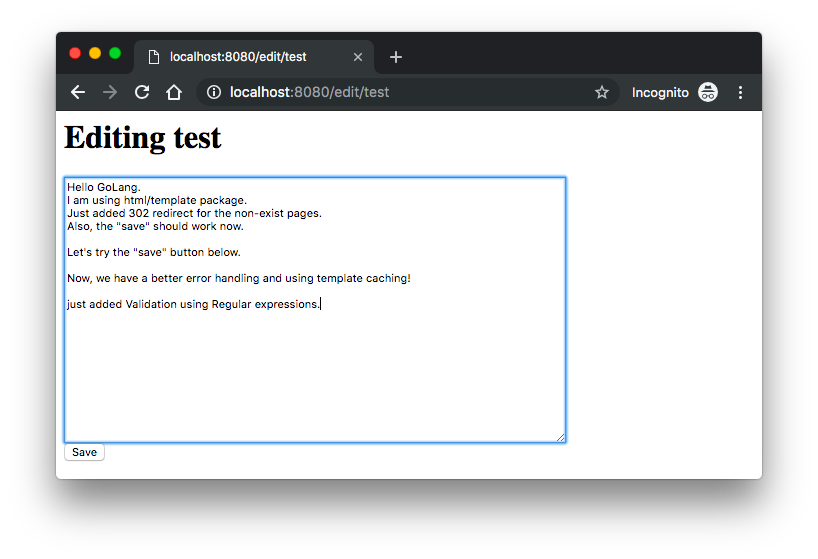
That's not what I'm exploring here: I'm using BPF to instrument a Go program for performance analysis. If you search for Go and BPF, you'll find Go interfaces for using BPF (eg, gobpf ). checking for errors and syncing at the end. In this post I'll quickly investigate a new way to trace a Go program: dynamic tracing with Linux 4.x enhanced BPF (aka eBPF). WriteToFile will print any string of text to a file safely by Otherwise, w.Write is called exactly once.Įrr := WriteToFile("test.txt", "The Witcher") If w implements StringWriter, its WriteString method is invoked directly. Golang WriteString() writes the contents of the string s to w, which accepts a slice of bytes. The ioutil.WriteFile() function will create a file if it does not exist, and if it exists, then truncate it and write the provided data in that file. You can open the test.txt file and see its content, which is “ AppDividend“.

We will write “ AppDividend” to a newly created file. The Write() function returns a non-nil error when n != len(b). It returns several bytes written and an error, if any. The Write() function writes len(b) bytes to the File. func (f *File) Write(b byte) (n int, err error) To write bytes into the file in Golang, use the os.Write() function. go run hello.goģ4 bytes written successfully Writing bytes to a file In the console, your output looks like this.
Golang file peek tv#
Now, if you check in the file directory, there is a new file called test.txt, and if you open that file, you will see “ LG 32 INCH Smart TV For My Company“. It writes a string rather than a slice of bytes. The method returns several bytes written and errors, if any. This function returns the File descriptor.įirst, we create a file and then use the WriteString() function to write the bytes into a newly created file. If a file with that name already exists, then a create function truncates the file. Inside the main() function, The os.Create() function creates the file named test.txt. In the above code, first, we have imported two fmtand ospackages. L, err := f.WriteString("LG 32 INCH Smart TV For My Company")įmt.Println(l, "bytes written successfully")
Golang file peek code#
The server takes in a request from client and response accordingly.See the following code example. If you look into the file, you will find the magic of gRPC is that all these informations are represented in go specific languages, and if you use other languages, the same protobuf will be represented in other specific language, and this is also why protobuf can cross-communicate between languages.

The -go_out option specifies the output directory of the generated file and also tells that we need to use grpc plugins. Go to your terminal and run: protoc -go_out=plugins=grpc. If you are familiar with any programming language, we can roughly make the analogy: service => class, rpc => function and message => global variables. In this example, our helloService provides a Hello function that requires input helloRequest message and output a helloResponse message. So the service keyword defines a service, and rpc defines the functionality of the service. (Note: make sure your GOPATH is correctly set up so that your packages and project will be under GOPATH/src ) gRPC OverviewĬomparing to traditional REST API, where the client communicates with the server by specifying a bunch of constraints, like sending to a specific url - localhost/api/v1/hello, localhost/api/v1/doSomething and specifying what kind of operations like PUT, POST, GET, … I think gRPC in a way abstracts the idea and defines the communication by simply calling functions in which messages are defined in protobuf format.

Golang file peek install#
install protoc-gen-go : as we use go in this post, you will need the go-support for protobuf.Install protoc : gRPC uses protobuf to communicate, in order to generate relevant files, you will need to install protoc :.In this post, let’s take a glance of gRPC and implement a simple service using Golang. My understanding is that gRPC inherits the functionality of REST and extended it with faster, lighter and more flexible service. There are numerous posts online discussing the advantages of gRPC and comparing it with REST, so I am not going to make redundant comments on this point. For a long period of time, REST API has dominated the web programming world until gRPC came and disrupted the industry.


 0 kommentar(er)
0 kommentar(er)
